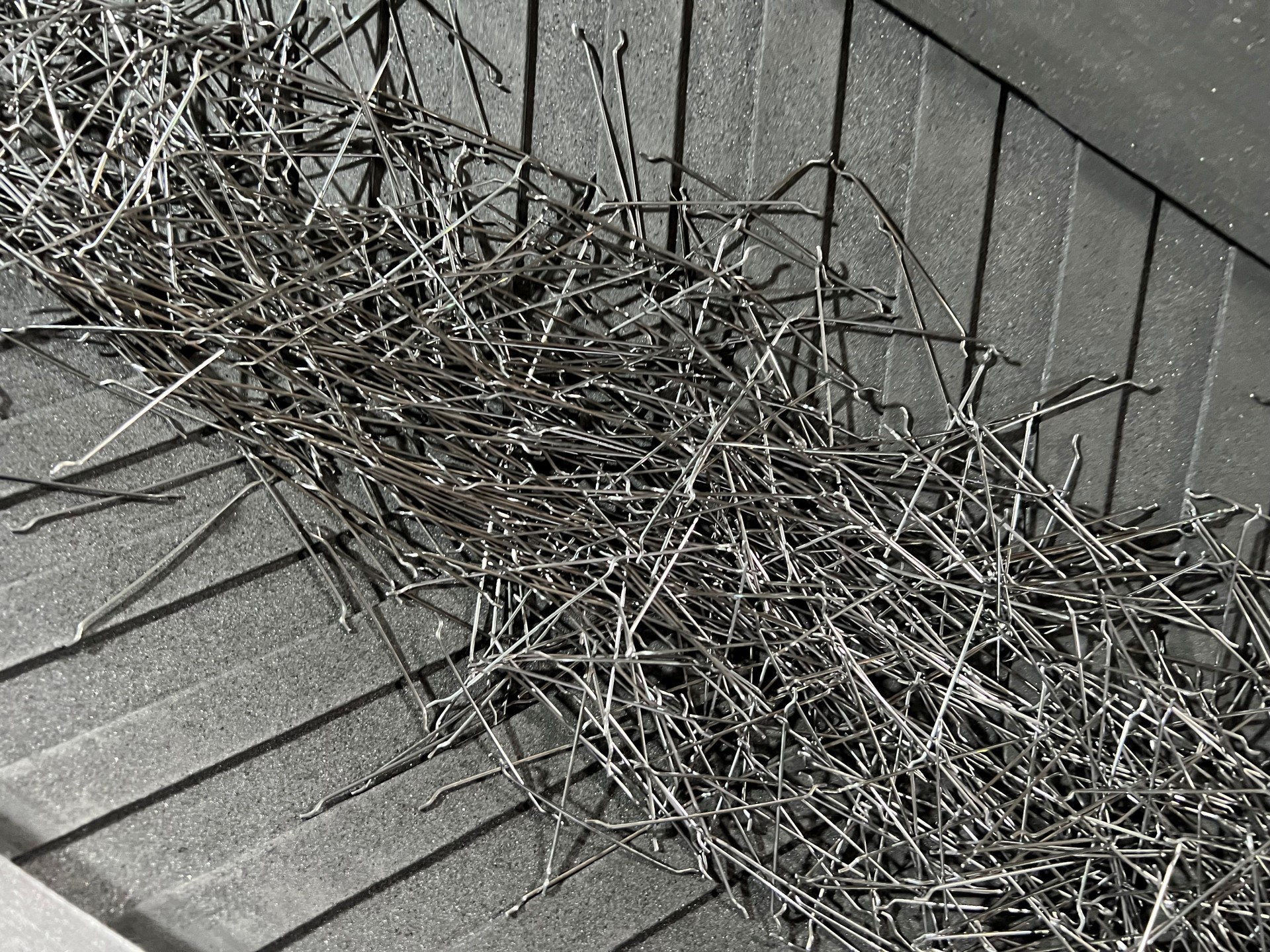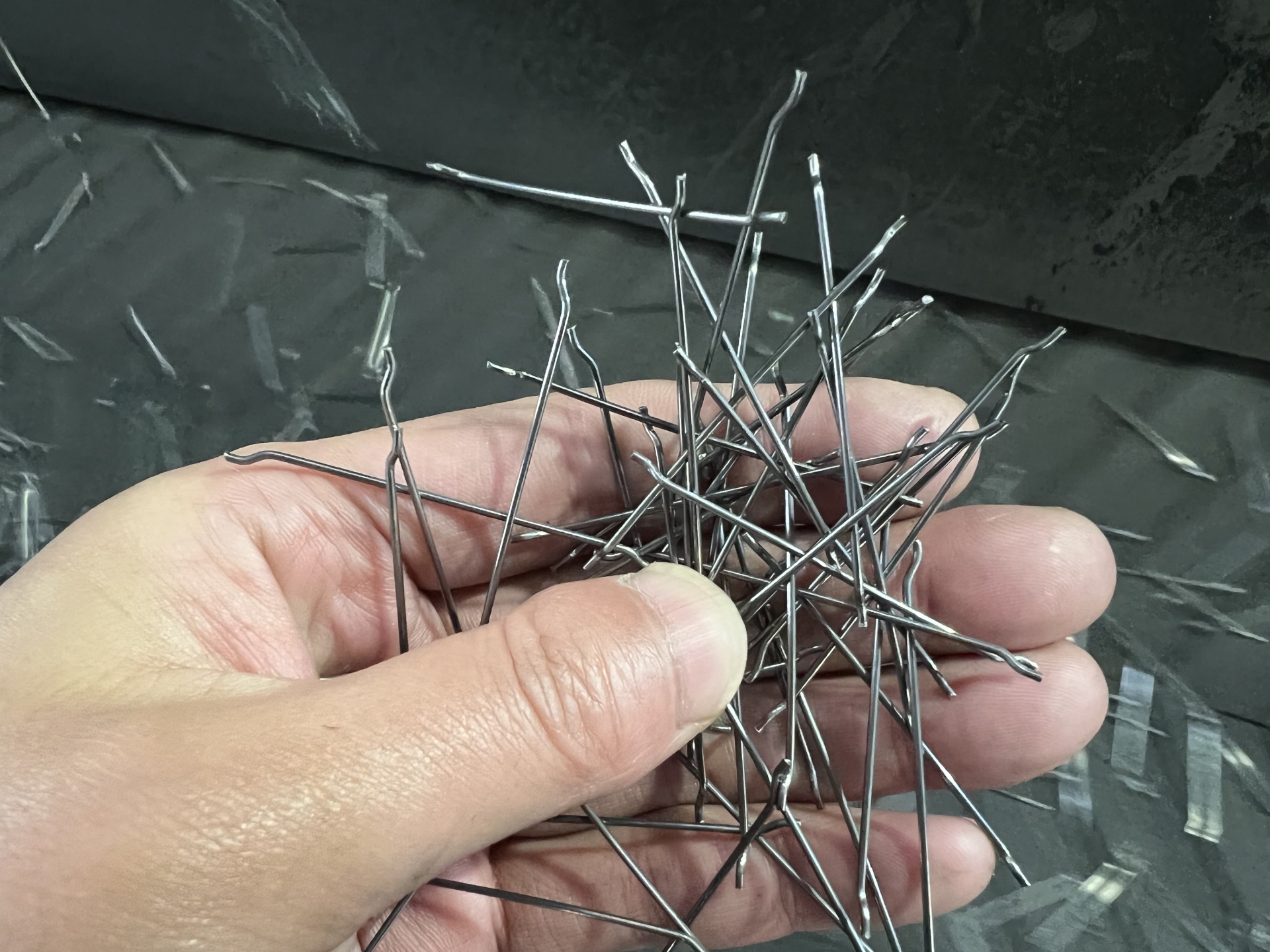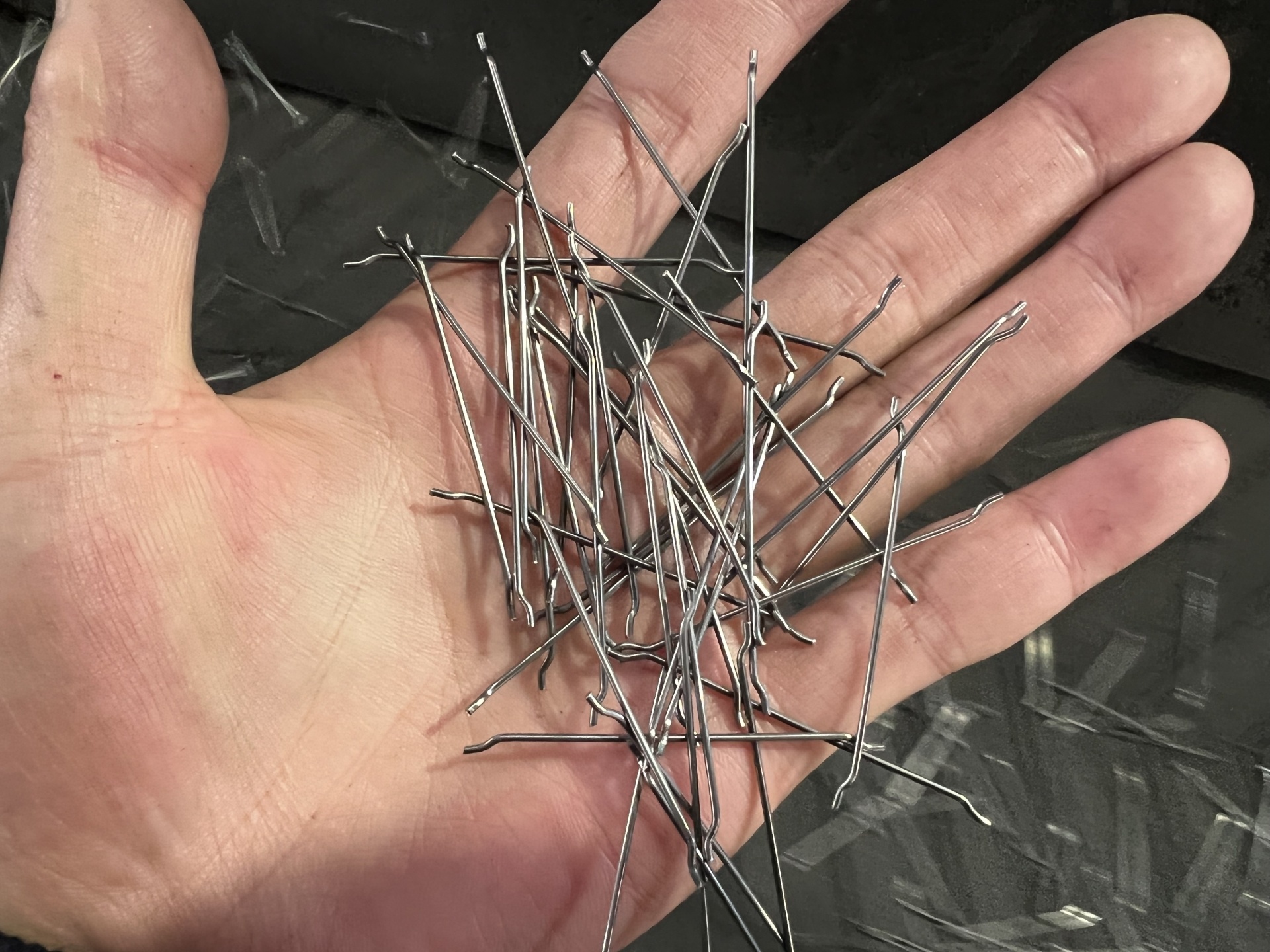Enhancing Structural Strength with Steel Fiber Shotcrete in Building and Decoration Materials
Discover the Power of Steel Fiber Shotcrete in Improving Structural Strength and Durability of Building and Decoration Materials. Learn How Steel Fiber Shotcrete can Enhance Concrete Performance and R
Table of Contents:
1. Introduction
2. Understanding Steel Fiber Shotcrete
3. Benefits of Steel Fiber Shotcrete
4. Applications of Steel Fiber Shotcrete in Building and Decoration Materials
5. Techniques and Best Practices for Using Steel Fiber Shotcrete
6. Common Misconceptions about Steel Fiber Shotcrete
7. Frequently Asked Questions (FAQs)
8. Conclusion
In the ever-evolving field of construction and decoration, engineers and architects constantly explore innovative materials and techniques to enhance structural strength and durability. One such remarkable material is steel fiber shotcrete, which has gained immense popularity for its ability to reinforce concrete and improve its performance. This article delves into the world of steel fiber shotcrete, exploring its benefits, applications, techniques, and debunking common misconceptions.
Steel fiber shotcrete is a unique type of concrete that incorporates steel fibers into the mix, providing increased tensile strength and resistance against cracking. The steel fibers, typically made from stainless steel or carbon steel, act as a reinforcement within the concrete matrix, effectively enhancing its structural properties. This revolutionary material revolutionizes traditional construction methods by offering superior performance, durability, and versatility.
Steel fiber shotcrete comes in various forms, each designed to cater to specific construction needs. Common types include hooked-end fibers, straight fibers, and crimped fibers. Hooked-end fibers are known for their excellent bonding with concrete, while straight fibers offer high tensile strength. Crimped fibers, on the other hand, provide enhanced crack resistance and durability.
When steel fiber shotcrete is sprayed onto surfaces, it forms a strong bond with the substrate. The steel fibers distribute evenly throughout the concrete, creating a three-dimensional reinforcement network. This network acts as a barrier to crack propagation and significantly improves the strength and ductility of the material. The enhanced structural integrity achieved by steel fiber shotcrete makes it an ideal choice for various construction and decoration applications.
Steel fiber shotcrete offers a wide range of benefits that make it a preferred choice for construction and decoration projects:
The incorporation of steel fibers in shotcrete significantly increases the tensile strength and flexural resistance of the material. This results in structures that can withstand greater loads and forces, making them more durable and long-lasting.
Steel fiber shotcrete improves the overall durability of building and decoration materials by reducing shrinkage, cracking, and spalling. It minimizes the risk of damage caused by environmental factors, such as temperature variations and moisture.
The steel fibers in shotcrete act as reinforcement, effectively limiting crack propagation and preventing the formation of wide cracks. This feature is particularly crucial in structures subjected to dynamic forces or seismic activity.
The use of steel fiber shotcrete allows for faster construction as it eliminates the need for traditional reinforcement methods, such as rebar installation. This saves time and labor costs while maintaining structural integrity.
Steel fiber shotcrete finds diverse applications in the construction and decoration industry. Some notable applications include:
Steel fiber shotcrete is extensively used in the construction of reinforced concrete structures, such as bridges, tunnels, and retaining walls. It provides additional reinforcement and enhances the overall strength and durability of these vital infrastructures.
In flooring and pavement applications, steel fiber shotcrete increases the load-bearing capacity and resistance to cracking. It is commonly used in industrial facilities, parking lots, and airport runways to ensure long-lasting performance under heavy traffic and extreme conditions.
Steel fiber shotcrete allows designers and architects to create intricate and visually appealing decorative concrete elements, such as facades, sculptures, and artistic structures. It offers both aesthetic value and structural integrity, making it a versatile choice in decorative applications.
To maximize the benefits of steel fiber shotcrete, it is essential to follow specific techniques and best practices:
The mix design of steel fiber shotcrete should be carefully calibrated to achieve the desired strength and workability. It is crucial to consider factors such as fiber type, aspect ratio, dosage, and adherence to industry standards.
The application of steel fiber shotcrete requires skilled operators and proper spraying techniques. It is vital to maintain consistent nozzle distance, nozzle angles, and application speed to ensure uniform fiber distribution and optimal bonding.
Before applying steel fiber shotcrete, the substrate should be adequately prepared by cleaning, repairing any defects, and applying a suitable bonding agent. This ensures a strong bond between the shotcrete and the surface, minimizing the risk of delamination.
Regular quality control and testing procedures should be implemented throughout the construction process to verify the desired properties of the shotcrete. This includes slump tests, compressive strength tests, and fiber content analysis.
Despite its numerous advantages, there are some misconceptions surrounding steel fiber shotcrete. Let's debunk a few of them:
While the upfront cost of steel fiber shotcrete may be higher than traditional concrete, it offers long-term cost savings by reducing maintenance and repair expenses. Its enhanced durability and crack resistance contribute to extended service life.
With proper training and expertise, applying steel fiber shotcrete is a straightforward process. Skilled operators can achieve excellent results, ensuring uniform fiber distribution and optimal bonding with the substrate.
Contrary to popular belief, steel fiber shotcrete is versatile and can be used in various construction and decoration applications. Its ability to enhance structural strength and durability makes it applicable in a wide range of projects.
Steel fiber shotcrete significantly extends the lifespan of structures by improving their resistance to cracking, spalling, and other forms of damage. When properly applied and maintained, structures reinforced with steel fiber shotcrete can have a lifespan of over 50 years.
Yes, steel fiber shotcrete is an excellent choice for structures located in seismic zones. Its enhanced crack resistance and ductility make it capable of withstanding seismic forces, reducing the risk of structural failure during earthquakes.
Absolutely. Steel fiber shotcrete performs exceptionally well in cold climates due to its reduced vulnerability to freeze-thaw cycles. It minimizes the potential damage caused by temperature variations, ensuring the longevity of structures.
No, steel fiber shotcrete does not require additional curing time. The curing process is similar to traditional concrete, and proper curing practices should be followed to achieve optimal strength and durability.
Yes, steel fiber shotcrete is widely used in architectural applications to create visually appealing decorative elements. Its combination of structural strength and design flexibility allows architects to bring their creative visions to life.
Steel fiber shotcrete has proven to be a game-changer in the construction and decoration industry, offering enhanced structural strength, durability, and versatility. By incorporating steel fibers into the concrete mix, this advanced material revolutionizes traditional construction methods and ensures long-lasting performance. With its numerous benefits and wide range of applications, steel fiber shotcrete is a valuable addition to the arsenal of materials used in building and decoration materials. Embrace the power of steel fiber shotcrete and unleash the potential of your structures.
1. Introduction
2. Understanding Steel Fiber Shotcrete
3. Benefits of Steel Fiber Shotcrete
4. Applications of Steel Fiber Shotcrete in Building and Decoration Materials
5. Techniques and Best Practices for Using Steel Fiber Shotcrete
6. Common Misconceptions about Steel Fiber Shotcrete
7. Frequently Asked Questions (FAQs)
8. Conclusion
1. Introduction
In the ever-evolving field of construction and decoration, engineers and architects constantly explore innovative materials and techniques to enhance structural strength and durability. One such remarkable material is steel fiber shotcrete, which has gained immense popularity for its ability to reinforce concrete and improve its performance. This article delves into the world of steel fiber shotcrete, exploring its benefits, applications, techniques, and debunking common misconceptions.
2. Understanding Steel Fiber Shotcrete
Steel fiber shotcrete is a unique type of concrete that incorporates steel fibers into the mix, providing increased tensile strength and resistance against cracking. The steel fibers, typically made from stainless steel or carbon steel, act as a reinforcement within the concrete matrix, effectively enhancing its structural properties. This revolutionary material revolutionizes traditional construction methods by offering superior performance, durability, and versatility.
2.1 Types of Steel Fiber Shotcrete
Steel fiber shotcrete comes in various forms, each designed to cater to specific construction needs. Common types include hooked-end fibers, straight fibers, and crimped fibers. Hooked-end fibers are known for their excellent bonding with concrete, while straight fibers offer high tensile strength. Crimped fibers, on the other hand, provide enhanced crack resistance and durability.
2.2 How Steel Fiber Shotcrete Works
When steel fiber shotcrete is sprayed onto surfaces, it forms a strong bond with the substrate. The steel fibers distribute evenly throughout the concrete, creating a three-dimensional reinforcement network. This network acts as a barrier to crack propagation and significantly improves the strength and ductility of the material. The enhanced structural integrity achieved by steel fiber shotcrete makes it an ideal choice for various construction and decoration applications.
3. Benefits of Steel Fiber Shotcrete
Steel fiber shotcrete offers a wide range of benefits that make it a preferred choice for construction and decoration projects:
3.1 Increased Structural Strength
The incorporation of steel fibers in shotcrete significantly increases the tensile strength and flexural resistance of the material. This results in structures that can withstand greater loads and forces, making them more durable and long-lasting.
3.2 Enhanced Durability
Steel fiber shotcrete improves the overall durability of building and decoration materials by reducing shrinkage, cracking, and spalling. It minimizes the risk of damage caused by environmental factors, such as temperature variations and moisture.
3.3 Improved Crack Resistance
The steel fibers in shotcrete act as reinforcement, effectively limiting crack propagation and preventing the formation of wide cracks. This feature is particularly crucial in structures subjected to dynamic forces or seismic activity.
3.4 Faster Construction Process
The use of steel fiber shotcrete allows for faster construction as it eliminates the need for traditional reinforcement methods, such as rebar installation. This saves time and labor costs while maintaining structural integrity.
4. Applications of Steel Fiber Shotcrete in Building and Decoration Materials
Steel fiber shotcrete finds diverse applications in the construction and decoration industry. Some notable applications include:
4.1 Reinforced Concrete Structures
Steel fiber shotcrete is extensively used in the construction of reinforced concrete structures, such as bridges, tunnels, and retaining walls. It provides additional reinforcement and enhances the overall strength and durability of these vital infrastructures.
4.2 Flooring and Pavements
In flooring and pavement applications, steel fiber shotcrete increases the load-bearing capacity and resistance to cracking. It is commonly used in industrial facilities, parking lots, and airport runways to ensure long-lasting performance under heavy traffic and extreme conditions.
4.3 Decorative Concrete
Steel fiber shotcrete allows designers and architects to create intricate and visually appealing decorative concrete elements, such as facades, sculptures, and artistic structures. It offers both aesthetic value and structural integrity, making it a versatile choice in decorative applications.
5. Techniques and Best Practices for Using Steel Fiber Shotcrete
To maximize the benefits of steel fiber shotcrete, it is essential to follow specific techniques and best practices:
5.1 Proper Mix Design
The mix design of steel fiber shotcrete should be carefully calibrated to achieve the desired strength and workability. It is crucial to consider factors such as fiber type, aspect ratio, dosage, and adherence to industry standards.
5.2 Spraying Techniques
The application of steel fiber shotcrete requires skilled operators and proper spraying techniques. It is vital to maintain consistent nozzle distance, nozzle angles, and application speed to ensure uniform fiber distribution and optimal bonding.
5.3 Surface Preparation
Before applying steel fiber shotcrete, the substrate should be adequately prepared by cleaning, repairing any defects, and applying a suitable bonding agent. This ensures a strong bond between the shotcrete and the surface, minimizing the risk of delamination.
5.4 Quality Control and Testing
Regular quality control and testing procedures should be implemented throughout the construction process to verify the desired properties of the shotcrete. This includes slump tests, compressive strength tests, and fiber content analysis.
6. Common Misconceptions about Steel Fiber Shotcrete
Despite its numerous advantages, there are some misconceptions surrounding steel fiber shotcrete. Let's debunk a few of them:
6.1 Steel Fiber Shotcrete is Expensive
While the upfront cost of steel fiber shotcrete may be higher than traditional concrete, it offers long-term cost savings by reducing maintenance and repair expenses. Its enhanced durability and crack resistance contribute to extended service life.
6.2 Steel Fiber Shotcrete is Difficult to Apply
With proper training and expertise, applying steel fiber shotcrete is a straightforward process. Skilled operators can achieve excellent results, ensuring uniform fiber distribution and optimal bonding with the substrate.
6.3 Steel Fiber Shotcrete is Only Suitable for Specific Applications
Contrary to popular belief, steel fiber shotcrete is versatile and can be used in various construction and decoration applications. Its ability to enhance structural strength and durability makes it applicable in a wide range of projects.
7. Frequently Asked Questions (FAQs)
FAQ 1: What is the lifespan of structures reinforced with steel fiber shotcrete?
Steel fiber shotcrete significantly extends the lifespan of structures by improving their resistance to cracking, spalling, and other forms of damage. When properly applied and maintained, structures reinforced with steel fiber shotcrete can have a lifespan of over 50 years.
FAQ 2: Can steel fiber shotcrete be used in seismic zones?
Yes, steel fiber shotcrete is an excellent choice for structures located in seismic zones. Its enhanced crack resistance and ductility make it capable of withstanding seismic forces, reducing the risk of structural failure during earthquakes.
FAQ 3: Can steel fiber shotcrete be used in cold climates?
Absolutely. Steel fiber shotcrete performs exceptionally well in cold climates due to its reduced vulnerability to freeze-thaw cycles. It minimizes the potential damage caused by temperature variations, ensuring the longevity of structures.
FAQ 4: Does steel fiber shotcrete require additional curing time compared to traditional concrete?
No, steel fiber shotcrete does not require additional curing time. The curing process is similar to traditional concrete, and proper curing practices should be followed to achieve optimal strength and durability.
FAQ 5: Can steel fiber shotcrete be used in architectural applications?
Yes, steel fiber shotcrete is widely used in architectural applications to create visually appealing decorative elements. Its combination of structural strength and design flexibility allows architects to bring their creative visions to life.
8. Conclusion
Steel fiber shotcrete has proven to be a game-changer in the construction and decoration industry, offering enhanced structural strength, durability, and versatility. By incorporating steel fibers into the concrete mix, this advanced material revolutionizes traditional construction methods and ensures long-lasting performance. With its numerous benefits and wide range of applications, steel fiber shotcrete is a valuable addition to the arsenal of materials used in building and decoration materials. Embrace the power of steel fiber shotcrete and unleash the potential of your structures.
Related Cases












